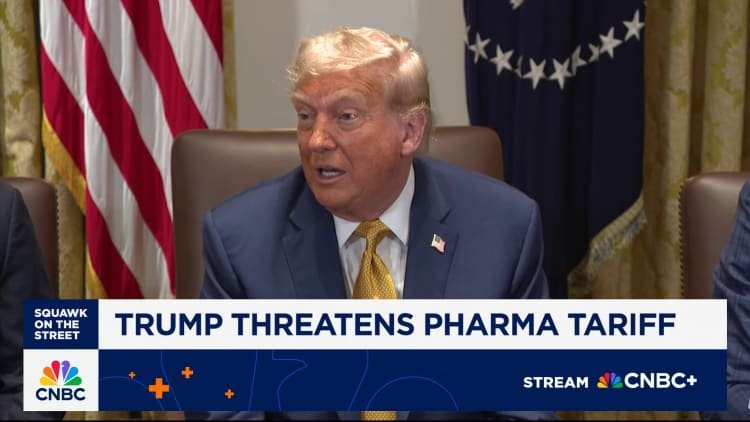The Impact of Tariffs on U.S. Consumers
As the U.S. grapples with evolving tariff policies, consumers are increasingly aware of the financial implications on their purchases. The introduction of tariffs—taxes assigned to imported goods—has caused noticeable shifts in pricing for various products.
Understanding Tariffs and Their Implications
Tariffs are essentially taxes that importers must pay to bring foreign goods into the United States. These additional costs often get passed on to consumers through heightened retail prices. Real-life examples illustrate this phenomenon clearly. For instance, a consumer purchasing a side table from Mexico via an online antique market faced hefty customs fees before the item could be delivered. This scenario amplified the final bill significantly, demonstrating a direct impact on consumer spending.
Retailers and businesses have options concerning these fees; they can either absorb the costs or transfer them onto consumers. The decision often hinges on factors like product value and origin, which are determined by the U.S. government.
How Tariffs Have Changed the Purchasing Landscape
The implementation of new tariffs has led to increased consumer reports of unexpected fees upon receiving international shipments. Many people have expressed concern about scams, where fraudulent requests for payment mimic legitimate customs fees. Notably, the logistics firm Flexport highlights that while import duties have always existed, the recent tariff increases make it more challenging to avoid passing on these costs.
Ordering products from overseas can be particularly troublesome if the goods aren’t already in a U.S. distribution center. In these cases, consumers may be surprised by import fees that they were unaware of at the time of purchase.
Recognizing Legitimate Charges vs. Fraudulent Scams
When ordering items from international sellers, it is crucial to verify the legitimacy of any unexpected tariff payment requests. For example, a request for payment may come as a processing fee from the U.S. Customs and Border Protection to release the item. However, consumers should remain cautious, as scammers often exploit unfamiliarity with tariff regulations, leading to fraudulent requests under the guise of legitimate payments.
In one case, a consumer received a payment demand through a trusted delivery driver, which added to the confusion surrounding the legitimacy of the request. It’s essential to ensure the authenticity of such payment demands to avoid falling victim to scams.
Steps to Validate Payment Requests
When confronted with a payment request that suggests extra tariff charges, approach the situation with caution. Here are some tips to validate the legitimacy of these claims:
Verify the Sender: Instead of clicking on links provided in the message, visit the official website of the retailer or carrier. Confirm the charge through official channels.
Look for Official Documentation: Check if the payment request includes Form 7501, a government document that outlines import duties.
- Evaluate Your Options: If the request is indeed legitimate, consider whether you wish to accept the charges or refuse delivery. Keep in mind that returning items may lead to additional complications, such as restocking fees or other logistical expenses.
Understanding the return policy and your potential liabilities can save you from unexpected costs. Each scenario may vary, and it is essential to be informed about possible financial repercussions involved with international purchases.
In summary, as tariffs reshape the economics of cross-border shopping, consumers need to remain vigilant and informed about potential costs and challenges related to international goods.
